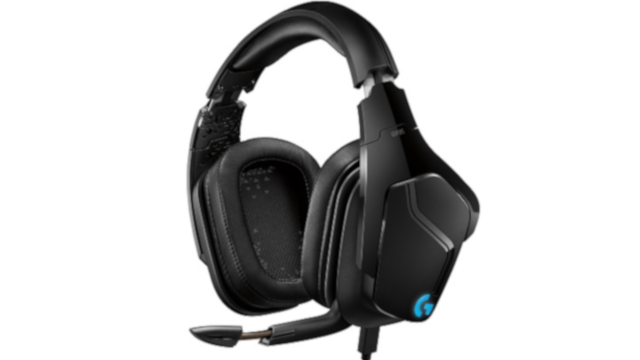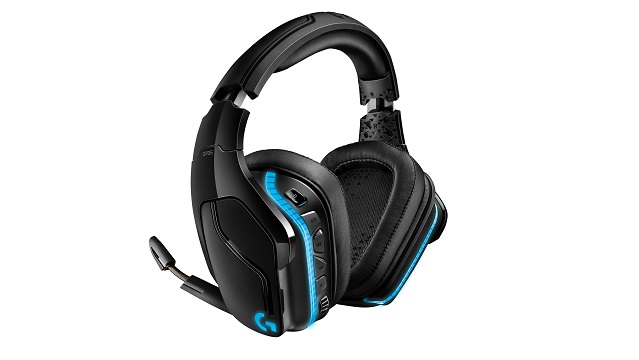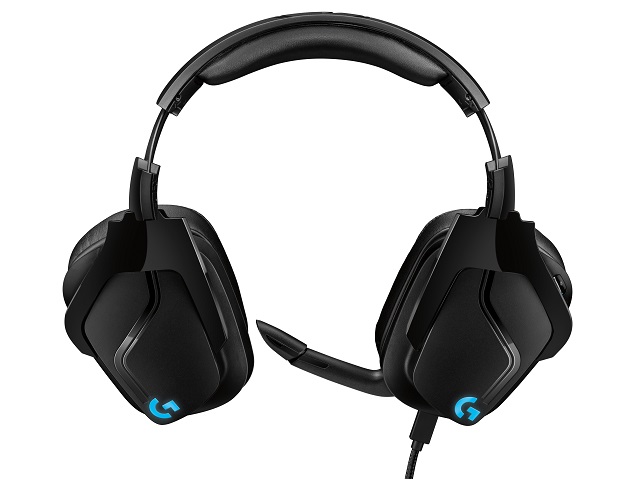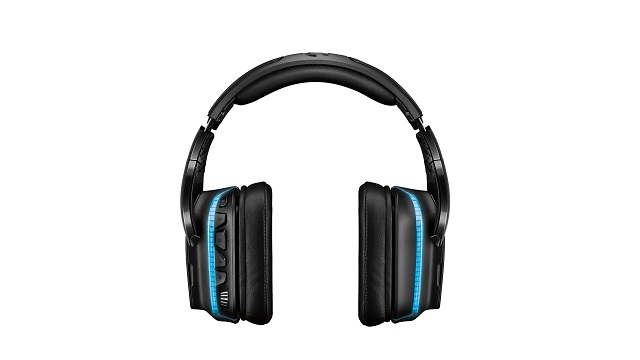Logitech’s newest wireless gaming headset, the G935, is essentially a remaster of the G933 Artemis Spectrum. Dubbed one of the best wireless gaming headsets on the market by reviewers and users alike, the Artemis Spectrum was first released.
I say first released because the Logitech G935 looks, acts, and feels just like the G933 in all but a few ways. From the design to the size to the headset’s high-quality sound, you’d be forgiven for thinking these two headsets were one in the same.
What’s important to note, though, is that the G935s are primarily differentiated from the G933s by way of their 50mm drivers. These larger drivers allow for an improved low-frequency response. This means the G935s are bassier out of the box, something that can be both good and bad for a set of headphones depending on your ear. Additionally, these headphones employ DTS Headphone: X 2.0 technology, which allows for Hi-Res audio recognition as well as, on paper, greater clarity.
At $169.99, the G935s aren’t cheap. However, they are cheaper than the still-available G933s. That’s good for consumers wanting to upgrade or for those that want to essentially get a new set of G933s.

Design
From stem to stern, the G935s look identical to the G933s. Coming in all black, the headset features a plastic frame with metal yoke, rhombus-shaped earcups, removable earcup plates, and leatherette padding.
Starting at the core of the headset, the overall build of the G935s is fairly sturdy. While the earcups feel a tad rickety, they also tilt inward off the yoke and rotate to sit flat on your shoulders or desk. Both of these are factors contributing to their “wobbliness” when the headset is held by the headband.
Each earcup is designed to be worn over the ears, and each has leatherette padding around them. The earcups themselves are deep and able to accommodate a variety of ear sizes. However, the earcups did feel a bit tight across my upper jaw, a feeling that persisted after a month of wear.
The left ear cup is where you’ll find all of the G935’s buttons, inputs and outputs, and noise-canceling mic.
The back of the earcup has the power switch at the top. Below that are three programmable “G” keys and a mic mute button. Below those is the volume wheel. The charging port and the 3.5mm audio port are on the bottom of the earcup. Finally, the noise-canceling mic is vertically nestled into the front of the left earcup.
Each earcup also features a detachable outer plate. Removing the left plate reveals a place to house the headset’s wireless USB dongle. Removing the right plate reveals the headset’s battery. I absolutely love this feature of the headset, specifically the housing for the USB dongle. It’s also nice to know that it’s super easy to replace the headset’s battery if need be.
Features
As is standard on most modern headsets, the G935s feature RGB lighting. Here, the design is replicated from the G933s; one lightband crawls up the back of each earcup to the top center of each earcup. The new, blockier Logitech logo is featured on the lower back corner of each outside, removable plate.
The RGB lighting can be finetuned through the refined G Hub software. As expected, you’ll have access to a vast palette of colors and a wide array of effects. You can assign one color to the lightbands and one to the Logitech logo, and you can also cycle colors while dialing in cycle rates and brightness.
The more interesting aspect here is the use of LightSync and Screen Sampler. The former allows you to sync your lighting profiles across all of your Logitech devices, including keyboards and mice. The latter allows you to set capture zones on your monitor. These zones then dynamically change the RGB scheme to whatever is on screen in a particular zone.
G Hub also allows you to assign actions and macros to the headset’s “G” keys. Here, you have options such as increasing bass and increasing treble. However, you can also assign the keys actions such as opening programs or performing keystrokes.
Lastly, G Hub is where you’ll tweak the headset’s audio profiles and access its equalizer. You can activate noise removal and enable surround sound. You can disable the headset’s sidetone and control mic volume. And you can choose audio presets or more finely adjust frequencies through the equalizer.
If you’ve used G Hub or any recent Logitech software, you’ll be right at home as not much has changed.

Performance
Before I get into the way this headset sounds, I do want to talk about a few hiccups that impact user performance, specifically the design of the “G” keys and the build of the volume wheel.
While I was able to get used to the placement of the “G” keys, I wish they were more defined. As it stands, it’s very difficult to quickly differentiate between them, even when not playing games. One tends to bleed into the other.
What’s more, I don’t (at all) see the use in the mic mute button because simply physically flipping the microphone up mutes it, and it’s located between the third “G” key and the volume. The mute button maybe should have been removed and the “G” keys made either larger or more defined in its absence.
Moving to the volume wheel, it too could have benefited from being larger. It’s just too small as it stands. Finding it can sometimes be a pain, especially with the mic mute button placed in such proximity. That’s not to mention the wheel feels loose and audibly “thunks” when touched/released. Thankfully, it doesn’t make a sound when actually increasing or decreasing the volume.
Aside from being bassy on its default, out-of-the-box setting, the G935s sound great. Where the Artemis Spectrum is still heralded as one of the best sounding wireless headsets available, the G935 inherits that lineage.
For gaming, DTS Headphone: X 2.0 seems to improve upon the previous version of the surround sound software. I was able to hear gunshots in Battlefield 1 and Sniper Elite V2 Remastered with great clarity. I was able to pinpoint the exact location of enemies in games like Apex Legends, too. Comparing them to the Logitech G533s, the G935s did seem to provide better clarity in these situations, allowing me to better discern exactly where sounds were coming from.
For movies, surround sound is fantastic. Movie and television dialog is clear and precise, while action sequences, such as those in John Wick and Mission Impossible: Fallout, are explosive. Interstellar is still, well, stellar in surround sound.
Although the headset’s bass-heavy proclivity means that music can easily become muddy, I do appreciate that the G935s render sound without distortion. Additionally, I very much enjoy how the headset forms the music around the vocals, where vocals always seem to be in the center channel and instruments in the surrounding channels.

Pros:
- Works on PC, PS4, Xbox One, Nintendo Switch
- Fantastic directional audio with improved DTS Headphone: X 2.0
- Clear mic with flip-to-mute features
Cons:
- Only works wirelessly on PC and PS4; Xbox One and Switch require the included 3.5mm cable
- Cramped button layout on the back of the left earcup
- Bass heavy on default profile; can only change profiles/access EQ on PC
In a vacuum, the G935s are a fairly easy recommendation. That’s especially true for those looking to get the Artemis Spectrum 2.0. Many of the pros and cons of that headset apply here. The 50mm drivers and DTS Headphone: X 2.0 technology found in the G935s do make this a slightly more attractive purchase than the G933s at this point.
While the sound quality of the headset is hard to beat, I can’t help but feel the headset’s design is just a bit too antiquated. I also still think that the “G” buttons are a bit too cramped, the headset is a tad bulky, and that not having some sort of EQ DAC for console completely removes one of the headset’s biggest selling points, and that is hard to ignore.
[Note: A G935 review unit was provided by Logitech for the purpose of this review.]







Published: May 7, 2019 01:34 pm